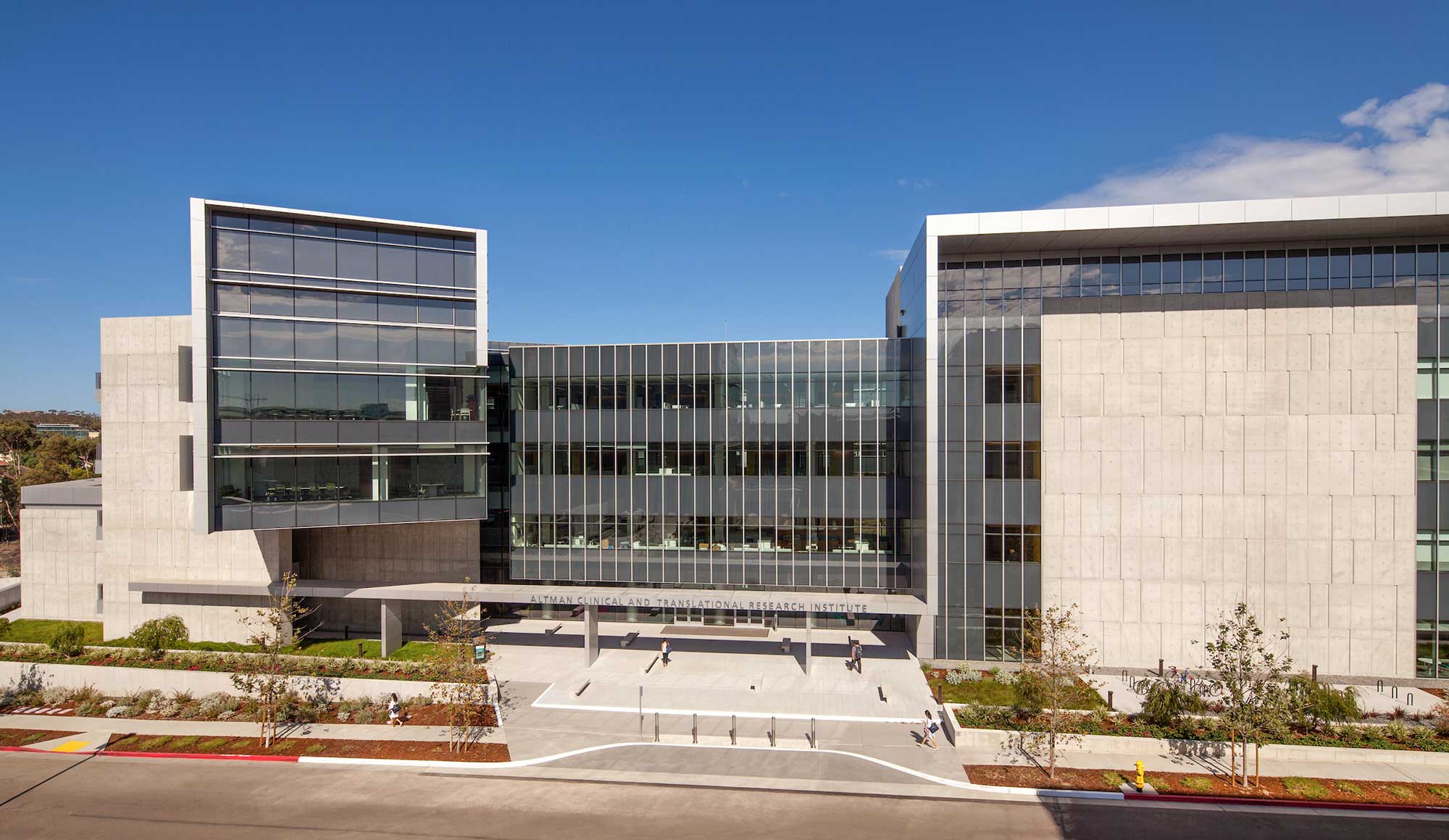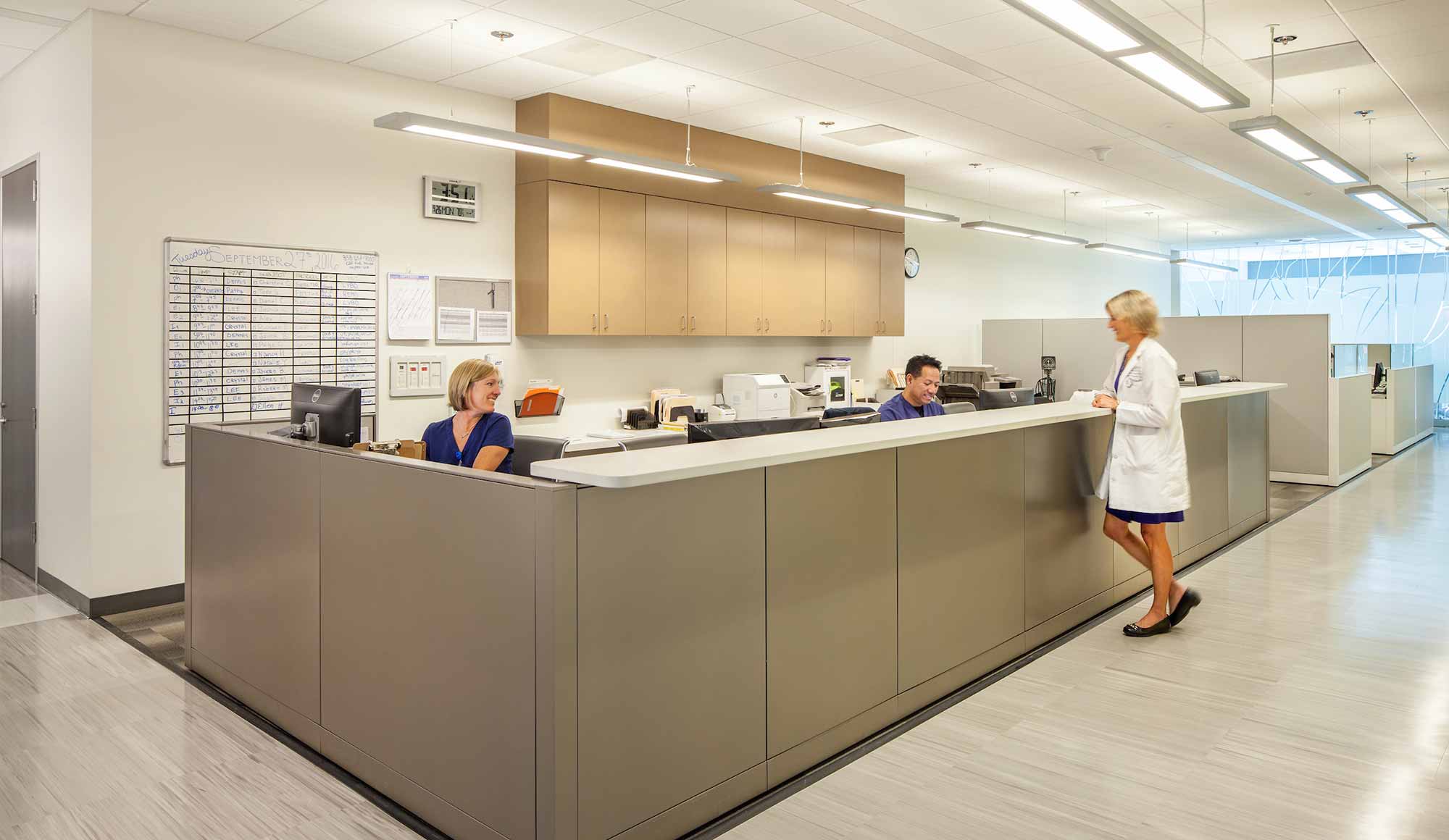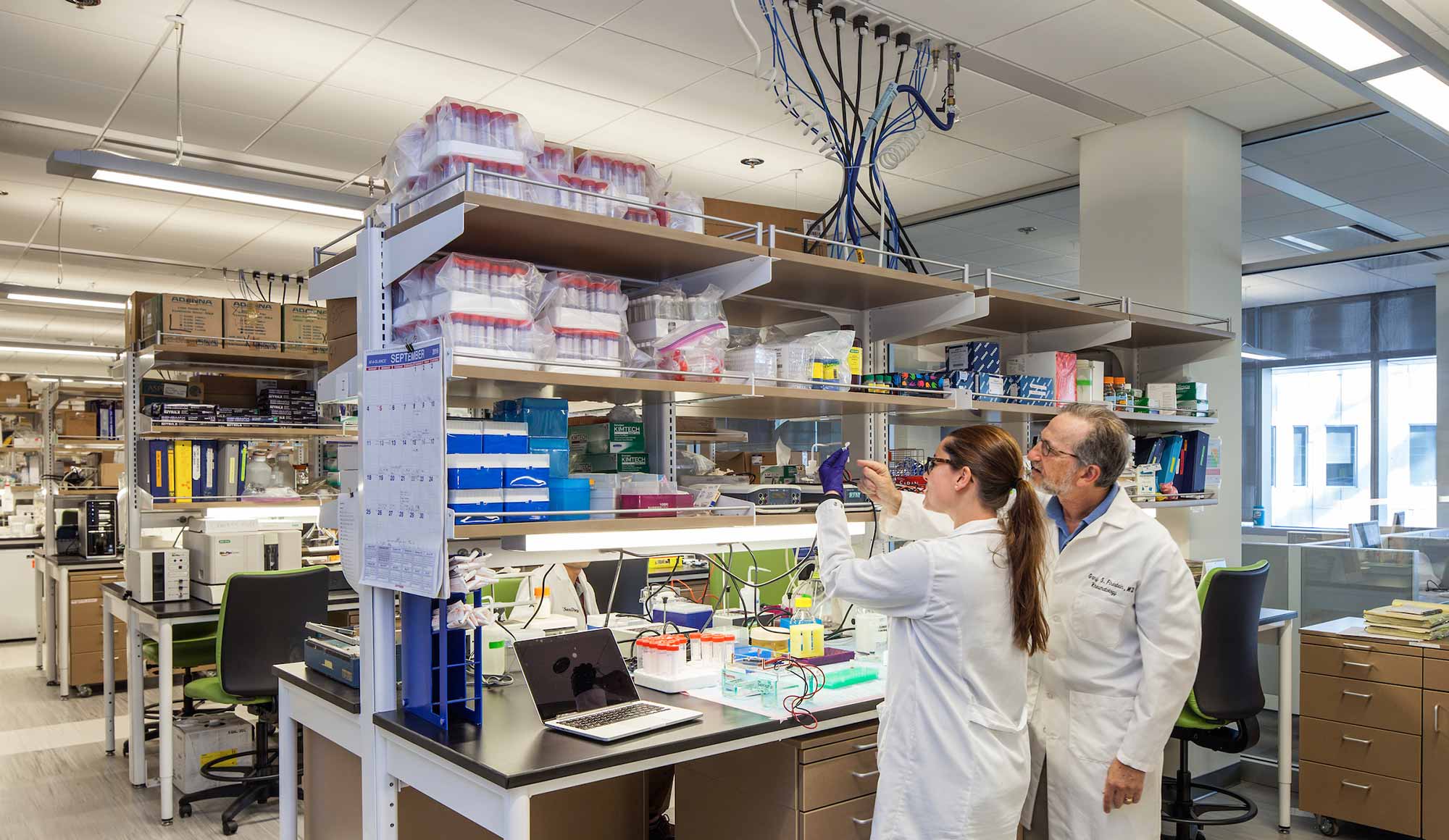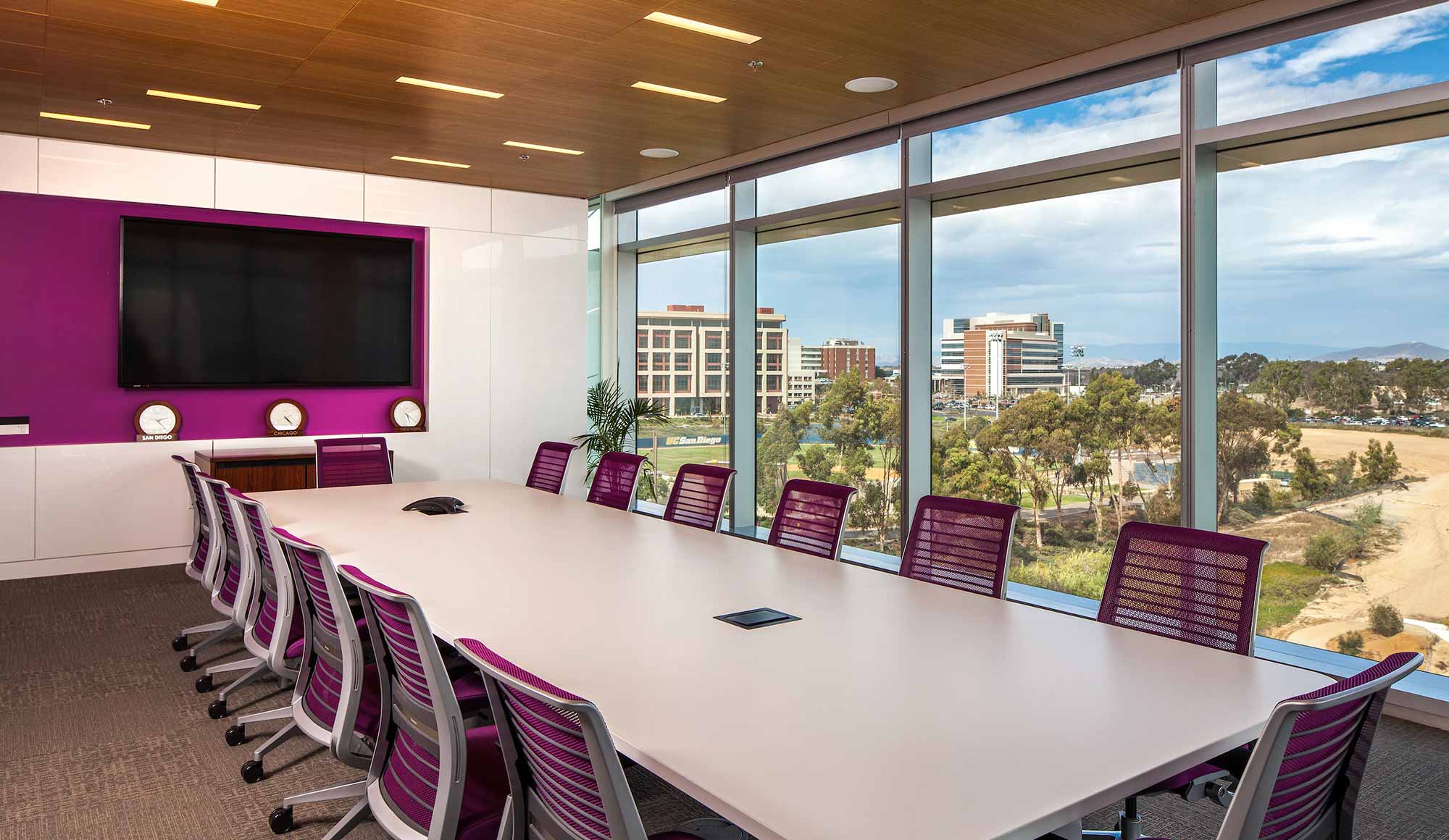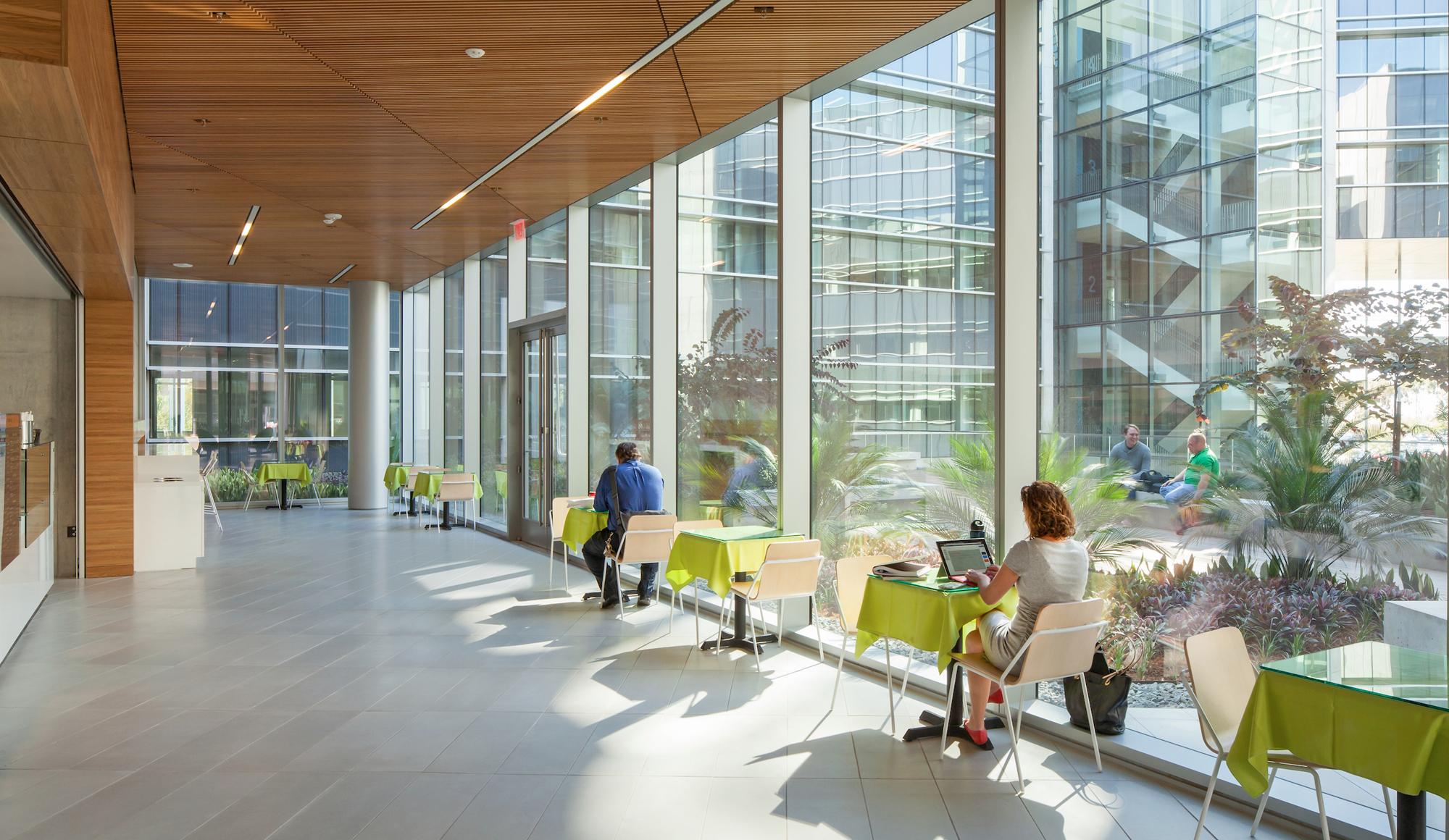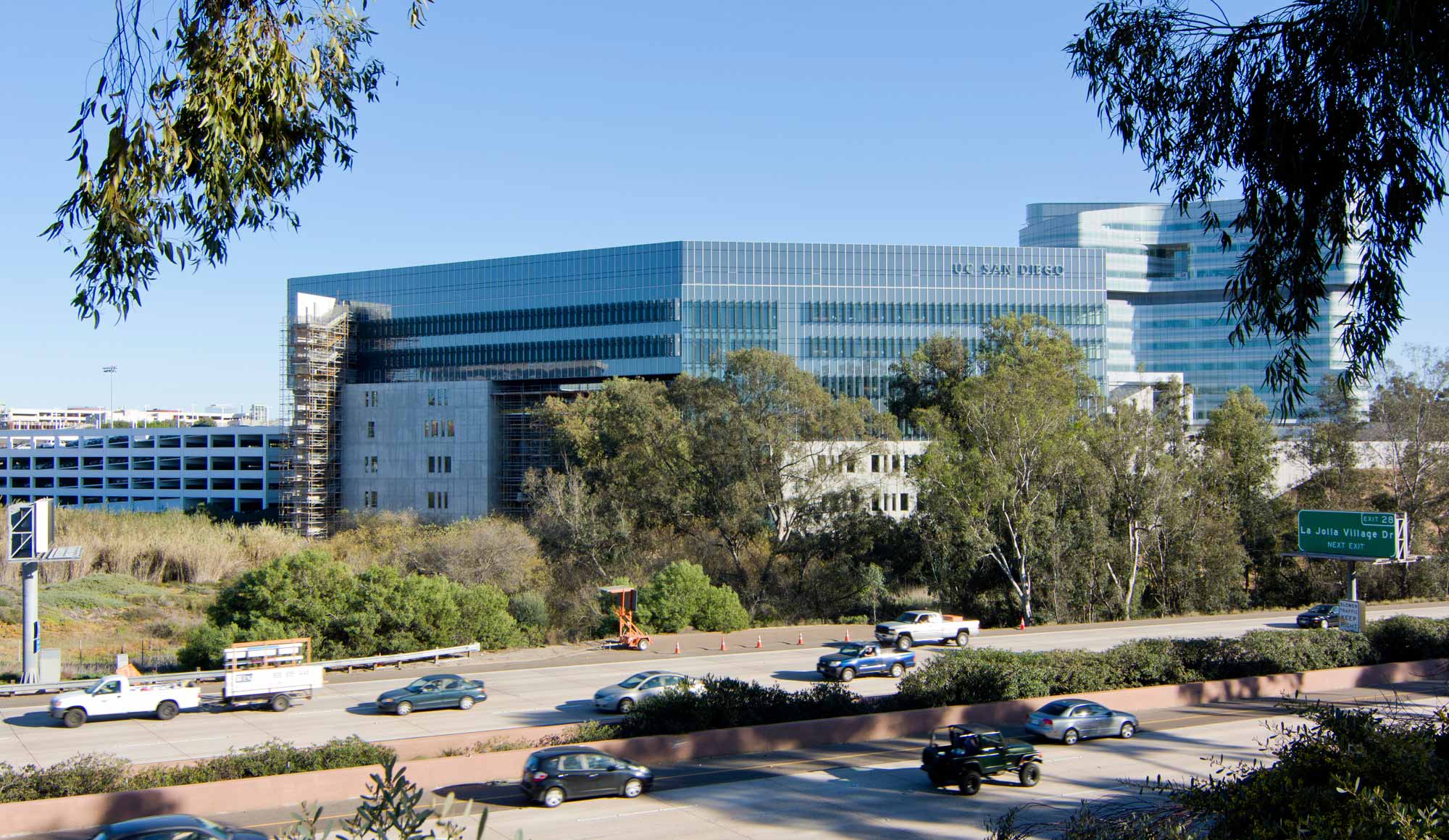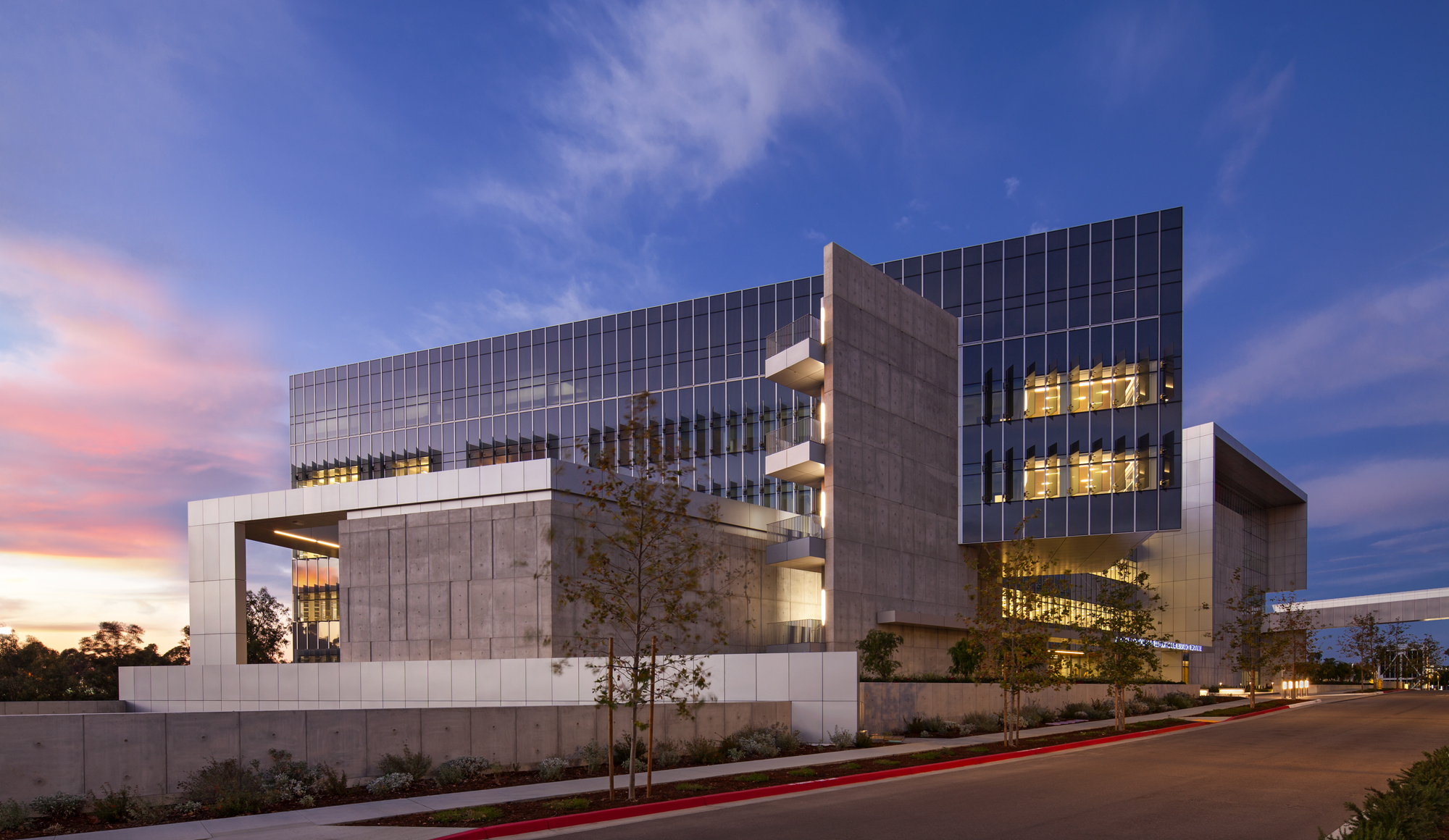The 359,000-square-foot facility will enable laboratory and clinical researchers to work side-by-side, to better understand and treat diseases from cancer and diabetes to arthritis. The building includes wet and dry research labs, laboratory support space, clinical areas, offices, an auditorium and a café.
ZGF programmed and designed UCSD’s Altman CTRI to provide an environment in which researchers can obtain education, resources and collaborations necessary to translate discoveries into practice. The design integrates the building into the natural topography of the canyon, including a diversity of angles which create open, light-filled interior spaces enabling the occupants to connect with the outdoor environment from various vantage points within the structure.
Welcoming Technical Challenges
To achieve their vision for light-filled interior spaces, ZGF increased the structural support column spacing to allow for the open floor plans. The increased span reduced the total number of support columns, requiring a stronger structural concrete mix to accommodate the same structural load. Measured in pounds per square inch (PSI), commercial concrete mixtures range in strength from 3,000 PSI—for sidewalks—to over 10,000 PSI—for long span and high-rise buildings.
Originally specified at 10,000 PSI, the concrete suppliers in the San Diego region had no historic data on mixes higher than 8,000 PSI, and none with the specified percentage of fly ash additive. This was a first-of-its-kind application for the area. Working with the concrete plant and the subcontractor, our team was able to develop a mix that met all the structural and aesthetic requirements.
Unique and Sustainable Features
The ACTRI project was designed to achieve minimum LEED Silver NC certification from the US Green Building Council, but is slated to surpass this goal and achieve LEED Gold NC. The project is also attempting net zero energy strategies. In addition to the energy efficient lighting, water saving plumbing fixtures and drought tolerant landscaping, the project features two innovative systems; chilled beams and thermal energy storage (TES) tank.
While chilled beams are a widely used alternative to conventional forced air cooling systems, they are a unique feature in a research facility. The high heat-producing laboratory equipment requires additional cooling than a typical office or school building. The locally controlled chilled beams combine with the outside air delivery system, taking advantage of the temperate San Diego climate. Originally designed to be a passive system, the active chilled beams were included through the value engineering process, adding $4 million back into the project budget. While still very energy efficient, the active chilled beams are also more effective in cooling the lab areas, making the switch a win-win.
The thermal energy storage (TES) system shifts cooling energy use to non-peak times. Water is chilled at night for a lower cost, and then drawn from during the day to meet air-conditioning loads or during a power failure. And while the ACTRI has little need to draw from the system due to its chilled beam cooling system, the TES is designed to be used by the entire UC San Diego east campus loop, decreasing the campus’ overall energy usage.

